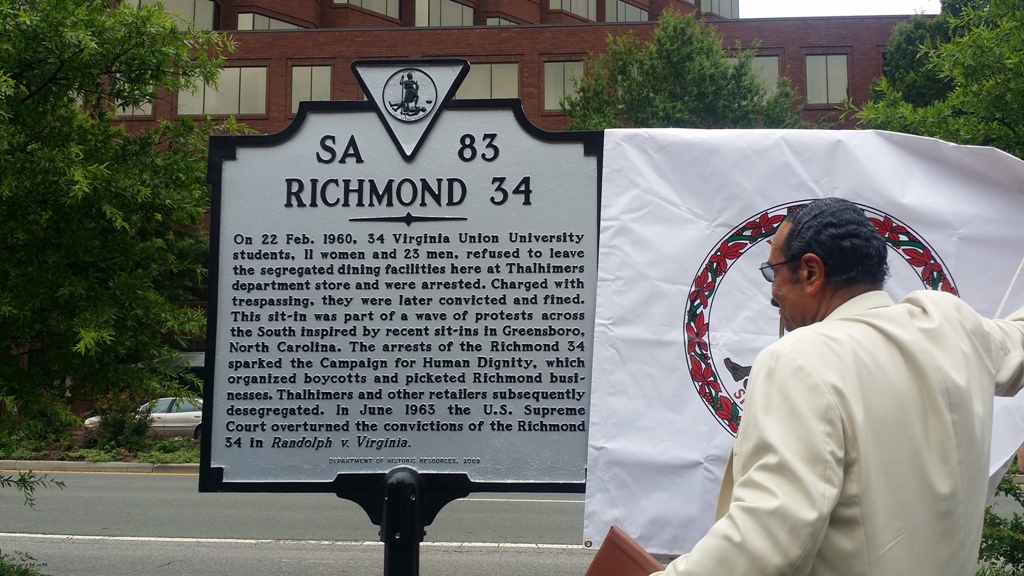The Arrest of the Richmond 34
February 22, 1960
Civil Rights Movement in Richmond, Virginia
February 20-22, 1960
On February 22, 1960, thirty-four students from Virginia Union University, a historically Black university in Richmond, Virginia, sought to integrate the segregated lunch counter of Thalhimers Department Store in Downtown Richmond. In the process, they were arrested. Just two days prior to that, 200 students from the university staged an initial protest in other stores and lunch counters, which had ended quietly in contrast. They had been inspired by the sit-in movement carried out by fellow African-American college students just weeks earlier in Greensboro, NC.
Over sixty years ago, the students had executed plans to have various members of their group sit at the "Whites only" counter at the Thalhimer's lunch counter and place orders. Since Blacks were not allowed to dine in the facilities, they were breaking the law. On two occasions, they were refused service. In the initial protest on February 18, 1960, students at the Thalhimers' lunch counter remained until the store closed for the day. During the second protest two days later, as they sat quietly around the counter and endured customers pouring hot coffee on their clothes and blowing cigarette smoke into their faces, the Richmond Police Department was called to have them removed from the premises. All had been influenced by the non-violent teachings of Dr. Martin Luther King, Jr. Thus, they were steadfast in their endeavor, assembled in the restaurant, peacefully making their stand. The police quickly arrived with their German Shepherd Dogs.
Thirty-four students were arrested, charged with trespassing per the store's management, then convicted and fined, marking the first mass arrest in U. S. History. With the assistance of local leaders – black and white, the NAACP, SNCC, VUU administration, and other major organizations and citizens, the students, who would be later known as the "Richmond 34", were released from jail within a matter of hours.
The actions of these brave students compelled the city to evaluate its unexpected role in the civil rights movement. It was an unforeseen social shift that was impossible to ignore. This period of unrest by blacks against racial inequity had expanded across the nation, leading to the passage of the U. S. Civil Rights Act of 1964, which outlawed racial discrimination in public places such as schools, shopping facilities, and even in employment and hiring practices.
